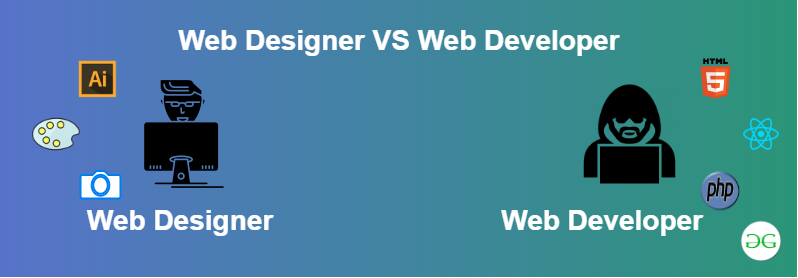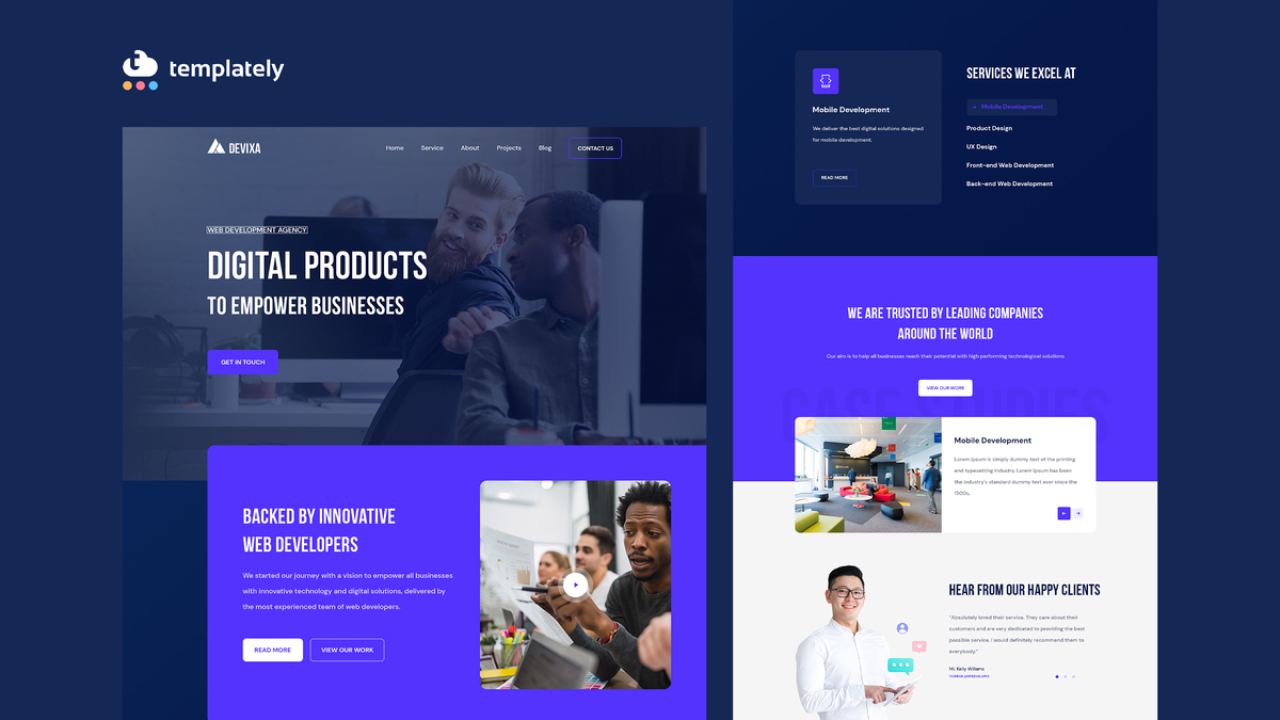How web development supports responsive and adaptive layouts
Everything About Website Design: Comprehending Its Relevance for Your Online Visibility
Website design acts as a fundamental facet of developing an online visibility. It influences individual experiences and forms perceptions of brands. Effective website design includes numerous elements that boost use and involvement. As the electronic landscape develops, understanding the value of these layout concepts becomes necessary (website design). What are the key parts that make a website not just practical, but engaging? Discovering this can disclose vital insights for anyone intending to do well online
The Function of Web Style in Individual Experience
Web style greatly affects customer experience by shaping just how site visitors communicate with a website. Aspects such as format, color pattern, and typography produce the first perception, assisting individuals with the web content. Reliable website design focuses on intuitive navigating, guaranteeing that visitors can quickly find details without aggravation. Furthermore, responsive style enhances availability across numerous gadgets, accommodating a broader audience. The speed of a site likewise plays a vital function; slower-loading pages can lead to greater bounce prices and lowered individual satisfaction. Aesthetic pecking order, attained through spacing and size modifications, guides users' attention to key attributes or phones call to activity. Uniformity in layout aspects promotes experience and trust, motivating users to engage more deeply. Ultimately, a well-designed web site not only draws in visitors but likewise maintains them, affecting their total understanding of the brand or solution it stands for. In this method, website design is an essential part of an effective on-line visibility.
Crucial Element of Efficient Internet Style
Effective website design depends upon numerous crucial elements that enhance customer involvement and fulfillment. Visual hierarchy principles assist users through content, ensuring that important details stands apart - website design. Mobile responsiveness is important in a digital landscape where individuals access internet sites across various devices.
Aesthetic Pecking Order Concepts
Although lots of components add to an effective site, the concepts of visual power structure stand apart as foundational to guiding user experience. Visual pecking order describes the plan of design elements to communicate importance and straight individuals' attention properly. Secret factors consist of size, spacing, comparison, and shade, which aid focus on info and produce a flow that is instinctive for users. Bigger aspects generally draw the eye first, while contrasting colors can highlight contact us to action. Thoughtful spacing can also improve readability and understanding. By applying these concepts, developers can craft a smooth experience that not just engages customers however likewise promotes navigation and enhances general usability. Ultimately, a well-executed aesthetic power structure improves the website's effectiveness in sharing its message.
Mobile Responsiveness Fundamentals
Mobile responsiveness is an important part of contemporary website design, making sure that internet sites function seamlessly across numerous devices and display sizes. This adaptability enhances user experience, as visitors can access content easily whether they make use of a tablet computer, smartphone, or desktop . Crucial element of mobile responsiveness include fluid grids, adaptable pictures, and media queries, which allow designs to adjust dynamically. Focusing on touch-friendly navigation and readable typography better boosts functionality on smaller sized screens. Additionally, maximizing loading speeds is important, as mobile users often anticipate fast access to info. By implementing these basics, web designers develop websites that engage individuals, minimize bounce prices, and ultimately add to raised conversions and customer fulfillment. Mobile responsiveness is thus vital for maintaining an affordable on the internet existence.
The Effect of Website Design on Brand Name Perception
Website design substantially affects brand understanding, beginning with the important initial impact a site makes on site visitors. Consistent visual aspects boost trust and recognition, reinforcing the brand name's identity. In addition, a favorable individual experience can shape exactly how consumers check out and engage with the brand name in general.
Impacts Issue
When visitors come across a site, their first response can significantly affect their perception of the brand. A well-designed site can stimulate feelings of trust fund, professionalism and reliability, and reliability, while an inadequately built one might cause uncertainty and uncertainty. Individuals often develop judgments within seconds, making the first perception important. Components such as format, color pattern, and typography play significant functions in shaping these initial ideas. A clean and modern-day layout can share technology, whereas out-of-date visuals might suggest disregard. Furthermore, an intuitive navigating system improves individual experience, reinforcing favorable understandings. Effective web style not just captures interest yet likewise develops a strong foundation for brand name identity, affecting ongoing connections with visitors and prospective customers.
Aesthetic Consistency Develops Trust

Customer Experience Influences Assumption
A natural aesthetic identity lays the foundation for a favorable user experience, which considerably affects brand assumption. Efficient web layout assurances that users can navigate a site with ease, causing higher satisfaction and interaction. When users experience an aesthetically pleasing and useful site, they are extra likely to link the brand name with professionalism and trust and dependability. Conversely, poor design can lead to frustration, causing customers to form negative impressions. Aspects such as shade systems, typography, and format play a vital duty in shaping emotional reactions. Inevitably, a well-designed internet site not only improves usability yet likewise reinforces the brand name's values and message, creating a lasting effect on user assumption and commitment. Consistency in layout further solidifies this link, promoting depend on and experience.
Browse Engine Optimization and Website Design
Effective website design is crucial for improving search engine optimization (SEARCH ENGINE OPTIMIZATION), as it straight influences how online search engine crawl and index a web site. A well-structured site, featuring intuitive navigating and clear power structures, enables online search engine to quickly understand the content and its relevance. Additionally, making use of maximized meta tags, headings, and alt message for pictures further help in boosting exposure in internet search engine outcomes.
Web page lots rate, a critical aspect of web style, substantially influences Search engine optimization positions. Internet sites that Recommended Reading fill slowly may irritate customers, leading to higher bounce rates, which online search engine take an unfavorable signal.
Including SEO ideal practices right into internet design not just enhances internet search engine rankings however additionally ensures that site visitors have a positive experience. Eventually, a holistic method to website design and search engine optimization can lead to enhanced web traffic, far better individual engagement, and boosted conversion rates, making it essential for on the internet success.
Receptive Design: Satisfying Customer Needs Across Instruments
As users increasingly access websites from a variety of gadgets, responsive style has actually become an essential service for fulfilling their demands. This approach guarantees that website adapt flawlessly to different screen dimensions, orientations, and resolutions, providing a perfect viewing experience. By employing fluid grids, adaptable images, and media questions, receptive layout enables content to range and reposition, boosting functionality throughout desktops, tablets, and mobile phones.
Receptive style improves site efficiency, as it usually decreases filling times with enhanced images and streamlined code. This efficiency not only boosts individual fulfillment however also contributes to better search engine rankings, as search engines prefer mobile-friendly sites. As the electronic landscape proceeds to progress, companies that prioritize responsive design are much better outfitted to engage their audiences effectively, ensuring that customers can browse and connect with material no matter of the device they make use of. Receptive design is crucial for keeping a solid on-line presence.
The Importance of Accessibility in Website Design
Website design not only requires responsiveness to different gadgets yet likewise demands a commitment to accessibility for all customers. Access in website design guarantees that individuals with handicaps can browse, comprehend, and communicate with online web content effectively. This encompasses various components, including message readability, alternate text for pictures, and key-board navigation choices. By prioritizing ease of access, internet developers create comprehensive experiences that deal with a varied target market, thus broadening their reach and enhancing individual fulfillment.
Obtainable web sites can improve search engine optimization and lower prospective legal threats linked with non-compliance to ease of access criteria. Companies that welcome comprehensive style not just meet honest obligations yet likewise show social duty, promoting a favorable brand name image. Eventually, the relevance of accessibility in internet layout lies in its ability to produce equitable online atmospheres, equipping all customers, no matter of their capacities, to involve totally with electronic web content and solutions.
Patterns in Website Design: Staying Present in a Digital World
Staying abreast of fads in web style is vital for creators aiming to provide contemporary and appealing customer experiences. As technology evolves, so do customer assumptions, making it vital for designers to include modern aspects into their work. Existing trends include minimalism, which focuses on tidy lines and adequate white space, boosting use and visual charm. In addition, the increase of dark setting alternatives satisfies individual comfort while surfing.
Responsive design continues to be vital, making certain internet sites work effortlessly throughout various devices. The combination of micro-interactions includes a layer of interaction, allowing customers to really feel a link with the site. Making use of strong typography and dynamic shade combinations can likewise help capture attention in a jampacked digital landscape. By accepting these fads, internet designers can develop visually attractive, useful, and easy to use internet sites, eventually strengthening their clients' on-line presence and fostering positive customer communications.
Frequently Asked Concerns
Exactly How Much Does Specialist Website Design Normally Cost?
Professional internet layout typically costs in between $2,500 and $10,000, relying on complexity and attributes. Custom styles may enhance prices further, while easier layouts can reduce expenses, making rates highly variable based on client requirements.

Can I Design My Website Without Coding Knowledge?
Yes, an individual can design a site without coding understanding. Countless easy to use web site home builders and content administration systems offer templates and drag-and-drop features, making it possible for customers to develop visually appealing sites easily and efficiently.
What Prevail Mistakes to Stay Clear Of in Web Design?
Usual errors in website design include chaotic formats, bad navigation, absence of mobile optimization, overlooking user experience, slow-moving filling times, utilizing a lot of typefaces or colors, and neglecting availability. These errors can lessen and prevent visitors involvement.

How Typically Should I Update My Site's Layout?
A site's layout ought to be upgraded every 2 to three years, or faster if significant patterns arise. Normal updates ensure relevance, enhance customer experience, and maintain compatibility with new modern technologies and gadgets, fostering continuous involvement.
What Tools Can Assist Me Develop My Own Internet site?
Various devices exist for creating web sites, consisting of WordPress, Wix, and Squarespace (branding). These systems supply user-friendly user interfaces, personalized design templates, and numerous functions that encourage people to design sites tailored to their certain demands and choices
Web style profoundly influences customer experience by shaping go now how visitors interact with a website. Effective web design pivots on numerous vital components that improve user engagement and contentment. Reliable internet style warranties that customers can browse a web site without effort, leading to higher complete satisfaction and engagement. Staying abreast of fads in internet style is vital for developers aiming to deliver contemporary and interesting individual experiences. Usual errors in internet style web design include chaotic designs, poor navigating, lack of mobile optimization, ignoring customer experience, sluggish loading times, using also lots of font styles or colors, and ignoring accessibility.